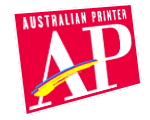Businesses in the printing industry who use inflation data to adjust supply related contracts are now confronted with a predicament - should they be passing on the price increases or heed the advice of the Reserve Bank of Australia (RBA) that the slowdown in global and domestic economic activity will start to bring inflation down during 2009, Printing Industries says.
Inflation has climbed to a seven-year-high following the release of the September 2008 quarter Consumer Price Index by the Australian Bureau of Statistics (ABS). The Consumer Price Index rose by 1.2 per cent during the September quarter lifting the annual headline inflation rate to 5.0 per cent.
The RBA's preferred measure of inflation, the underlying inflation rate, also rose between 1.2 and 1.3 per cent during the September quarter and has now reached an annual rate between 4.6 and 4.8 per cent.
Inflation in sectors not exposed to foreign competition increased at an annual rate of 6.1 per cent compared to 3.4 per cent for sectors exposed to foreign competition.
Commenting on the latest inflation data Hagop Tchamkertenian, national manager for policy and government affairs for Printing Industries says that the printing and associated industries need to manage this period of high inflation prudently.
He says, “In recent times we have seen considerable cost pressures on our industry emanating from increased raw material prices and labour costs. With printed matter remaining sensitive to price increases, printing businesses face the prospect of reduced print volumes associated with price increases.”
Tchamkertenian continues, “Printing businesses need to assess whether by passing on the cost increases to their clients the net effect will still be positive or not. In other words will increased revenue brought about by price increases be sufficient to offset the corresponding fall in revenue due to reductions in print volume.”
He concludes, “The other issue faced by printers is whether to pass on the costs fully or proportionally. Again this decision will vary from business to business.”
The most significant price rises during the September quarter were for rents, water and sewerage, house purchase, automotive fuel, deposit and loan facilities, overseas holiday travel and accommodation, electricity and property rates and charges.
The most significant offsetting price reductions occurred in child care, pharmaceuticals, audio, visual and computing equipment and motor vehicles.
Brisbane continues to hold the title of the city with the highest annual inflation rate at 5.6 per cent; followed by Canberra at 5.2 per cent; Adelaide at 5.1 per cent; Sydney and Perth at 4.9 per cent; Melbourne at 4.8 per cent; Darwin at 4.5 per cent and Hobart at 4.3 per cent.
The rise in inflation during the September quarter was expected by the RBA (as it indicated in its recent assessment of the economy) to deteriorate further in the short term before starting to improve.
The release of the Producer Price Index, which measures wholesale inflation, showed the deteriorating trend with significant price increases reported across all stages of production. Preliminary stage prices rose by 13.3 per cent during the year to September; intermediate stage prices rose by 9.7 per cent during the year to September and final stage goods rose by 5.6 per cent.
The reported increases in producer prices represent the largest quarterly movements for each stage of production since the index was first calculated by the ABS a decade ago.
Despite the rise in inflation, the RBA is still expected to reduce official interest rates again before Christmas due to ongoing concerns about domestic economic growth. While the RBA is not pleased that the inflation rate continues to remain well above the upper target range of 3 per cent; the RBA's attention has shifted towards preventing the Australian economy from sliding into a recession and as a consequence is prepared to ease monetary policy further.


 Andrew Tribute
Andrew Tribute













